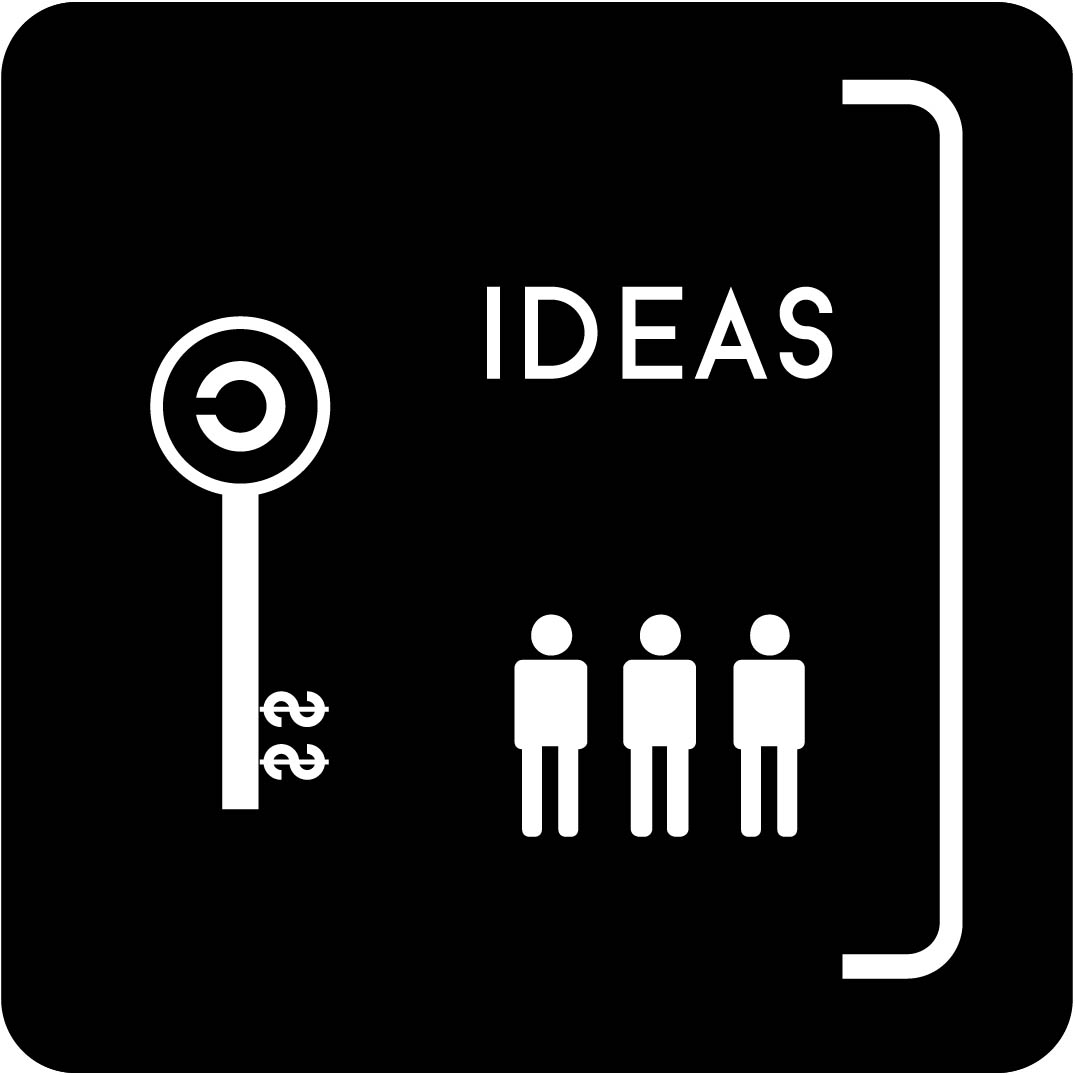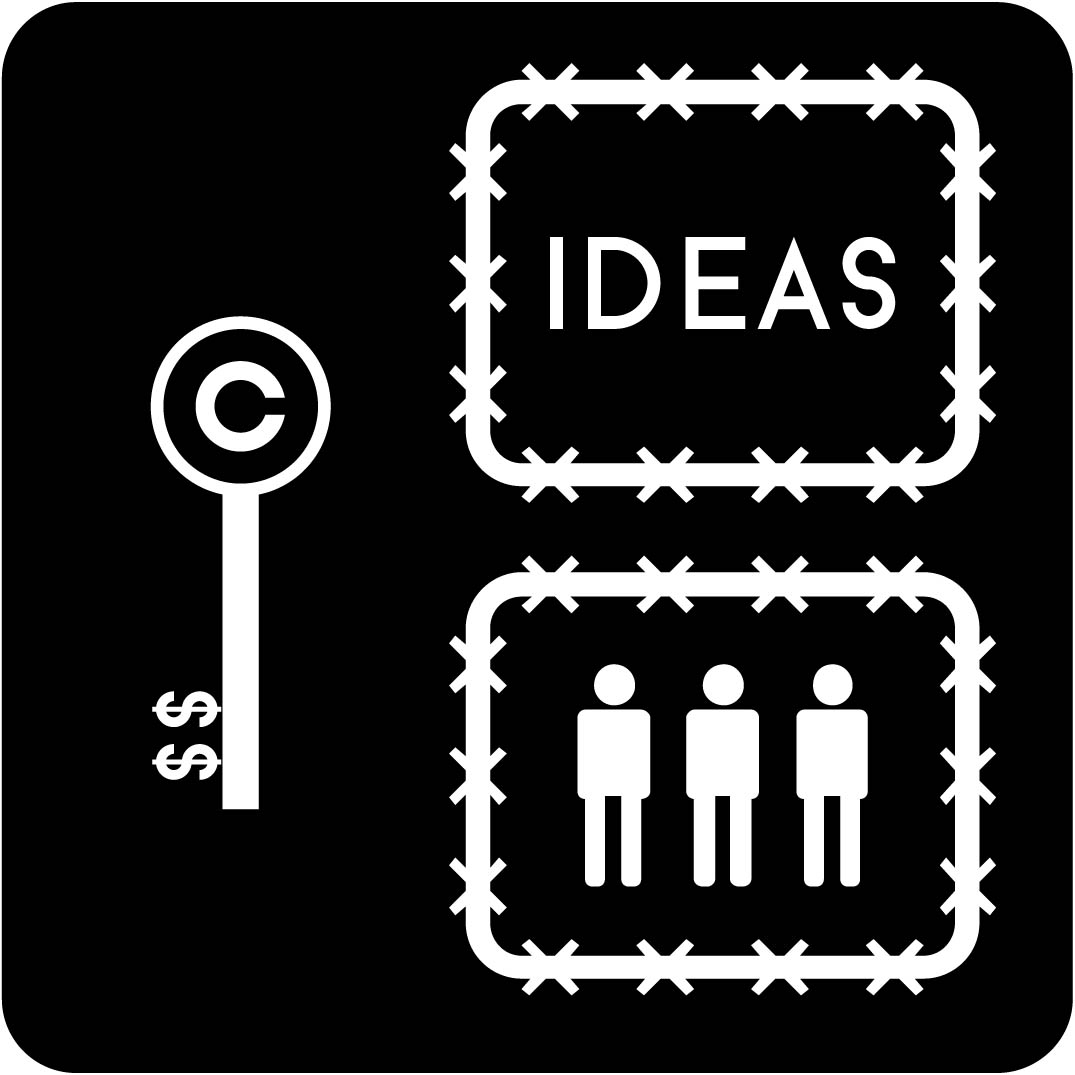There are a lot of important and exciting discussions currently taking place around issues concerning the ownership of ideas. The thoughts and the accompanying practices surrounding the subject have been formed through a diverse range of alliances, interests and motivations. The arguments are becoming increasingly polarised into distinct methods and approaches that already challenge and govern, not only our lives and working practices, but also, our ability to communicate.
It is vital that we as practitioners, within the creative sphere, equip ourselves with the knowledge necessary to understand and actively participate in the debate. To the community in general, whose concerns and discussions may lie within the realm of aesthetic production, these arguments may appear dull, irrelevant, and even trivial. However, if we continue to remain passive and do not seek even a basic insight, we will allow not only ourselves, but also our knowledge and skills to remain as tools for manipulation and control.
If we continue to remain passive and do not seek even a basic insight, we will allow not only ourselves, but also our knowledge and skills to remain as tools for manipulation and control
Proprietary symbols
A lot has been written about the history of letterforms and their proposed origins. These investigations tend to focus on the technical aspects and the periodical development of typography. There is however very little analysis surrounding the political purpose, ideology or implications of graphic symbols.

Within the present context, the vast majority of alphabetical symbols are intended to operate as devices in aiding the readers understanding. They are a set of tools used to express the authors voice, inflection and tonality, facilitate ideas and give them a means of expression. Despite some interesting and original thinking, there have been very few recent additions to the general lexicon. However, there are some relatively contemporary typographical designs that have blended in so well, we are now unaware of them or their reason for existing.
One such design is the copyright symbol—represented by the letter ‘C’ in a circle “©”. With an unimposing and simple design, its place in society can easily be taken for granted. No longer is the primary function of this modern glyph concerned with expanding thought, language, grammar or contextualisation. Indeed, the only meaning this character can convey is that the particular piece of work it is associated with is owned.
Along with other proprietary logos, such as ® and ™, it has been granted a place within the Unicode character set which helps reinforce and maintain a presupposed standard. In a similar but expanded way, Deleuze/Guattari (1988: 76) stress the disciplinary character of language: “Language is made not to be believed but to be obeyed, and to compel obedience”.
What is interesting is, in order for this system to work, the symbol itself, has to be free from these very constraints.
There is no copyright on the copyright symbol. Indeed rather perversely the © device has to be a non-copyrighted design otherwise nobody would be able to use it
There is no copyright on the copyright symbol. Indeed rather perversely the © device has to be a non-copyrighted design otherwise nobody would be able to use it.
Alternative approaches
The primary concern of copyright laws lies in restricting the right to make copies of a particular work. However, ideas are not objects that can be wholly owned—they can be infinitely copied and re-used due to their immaterial form. That is the essential thought behind the concept of copyleft (all rights reversed). The icon itself is a clever appropriation of the © symbol. By reversing the design, we have to stop and think what the original represents, and what this new form communicates.

Wikipedia explain that “A copyleft license uses copyright law in order to ensure that every person who possesses a work, can also use, modify, and redistribute both the work, and derivative versions of the work. In that sense copyleft is a simple but powerful method for exploiting the established structure of Intellectual Property Rights. By subverting the restrictions of copyright, it imposes on the dissemination and development of humankind's knowledge.”—The idea is, in itself, very simple, but its implications are quite dramatic.
Power and authority
Late capitalism is predicated on the creation of scarcity in informational commodities, by the implementation of monopoly, granting intellectual property law, which governs their use. It is highly vulnerable to the critique offered by what seems like a simple solution—information can be infinitely copied and re-used due to its immaterial form. Therefore constricting the flow, copying and creation of informational artefacts is highly difficult and politically challenging for the multinational media corporations.
It is important to understand that releasing work copylefted is not giving things away. Rather, it is licensing informational products, in such a way that their use within commodity capitalism, will result in a transformation of the nature of the derivational goods. In other words, copyleft licensing encourages a chain of goods to become equally open. This has radical potentials that could produce far-reaching consequences.
Copyleft licensing encourages a chain of goods to become equally open. This has radical potentials that could produce far-reaching consequences
Potential
In the present system, there is no single method or approach, which can be initiated to eliminate poverty, slavery or human suffering. This however, should not be used as a reason or excuse to do nothing. If we are the imaginative and creative industry we are so keen to promote ourselves as, we must engage that potential and utilise our collective knowledge and skills, to produce work that has real effect. Explicitly seizing the opportunity to use copyleft licensing is more than just saying you are political. Unlike individualistic and banal statements of intent, this could provide a lever to radicalise and transform our, taken for granted, notions of property.
(With thanks to David M. Berry—Libre Society)